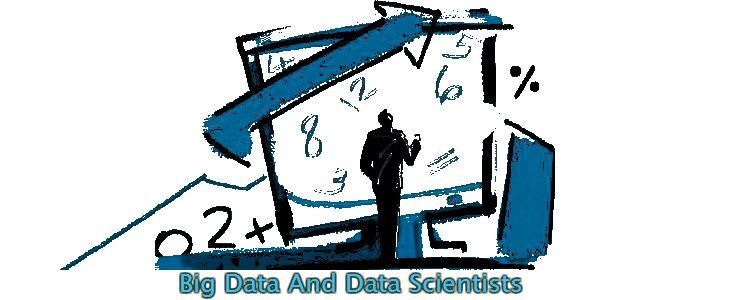Big Data And Data Scientists

The Big Data subject begins to draw attention. Several studies and surveys show that many companies are beginning to implement initiatives in this area. Some studies, including one recently conducted by Deloitte indicates that this trend is only in early stages of development and estimated that fewer than 50 major projects (From 10 Petabytes) are running around the world.
Remembering that we’ve talked in previous posts, we can summarize the concept of Big Data with a simple formula, Big Data = Volume + Speed + Range + Truth and Value. Volume because apart from data generated by transactional systems, we have the multitude of data generated by the objects in the Internet of things such as sensors and cameras, and those generated via social media PCs, smartphones and tablets. Variety because we are treating both structured data and unstructured text such as photos, videos, emails and tweets. And speed, because we often need to respond to events almost in real time. That is, we are talking about the creation and processing of massive data volumes.
This scenario growth of Big Data also shows that it is emerging new employment opportunities for IT professionals.
A new position called “Data Scientist” is a good example. Demand usually training in Computer Science and Mathematics, as well as the analytical skills needed to find a needle in a haystack providential data collected by the company.
“A data scientist is someone who is curious, who analyzes the data to detect trends,” said Anjul Bhambhri recently, vice president of IBM’s Big Data Products. It’s almost like a Renaissance man who really wants to learn and bring change in an organization.
We also identified that there is a demand for developers and system administrators who specialize in Hadoop tools, designed for applications with distributed data-intensive and used by well-known sites like Yahoo, Facebook, LinkedIn and eBay.
- How Cloud Computing Is Changing The Labor Market - March 25, 2015
- Adopting Infrastructure as a Service Can be a Good Deal - March 17, 2015
- Will Virtualize? Take These Six Points Into Consideration - March 12, 2015
